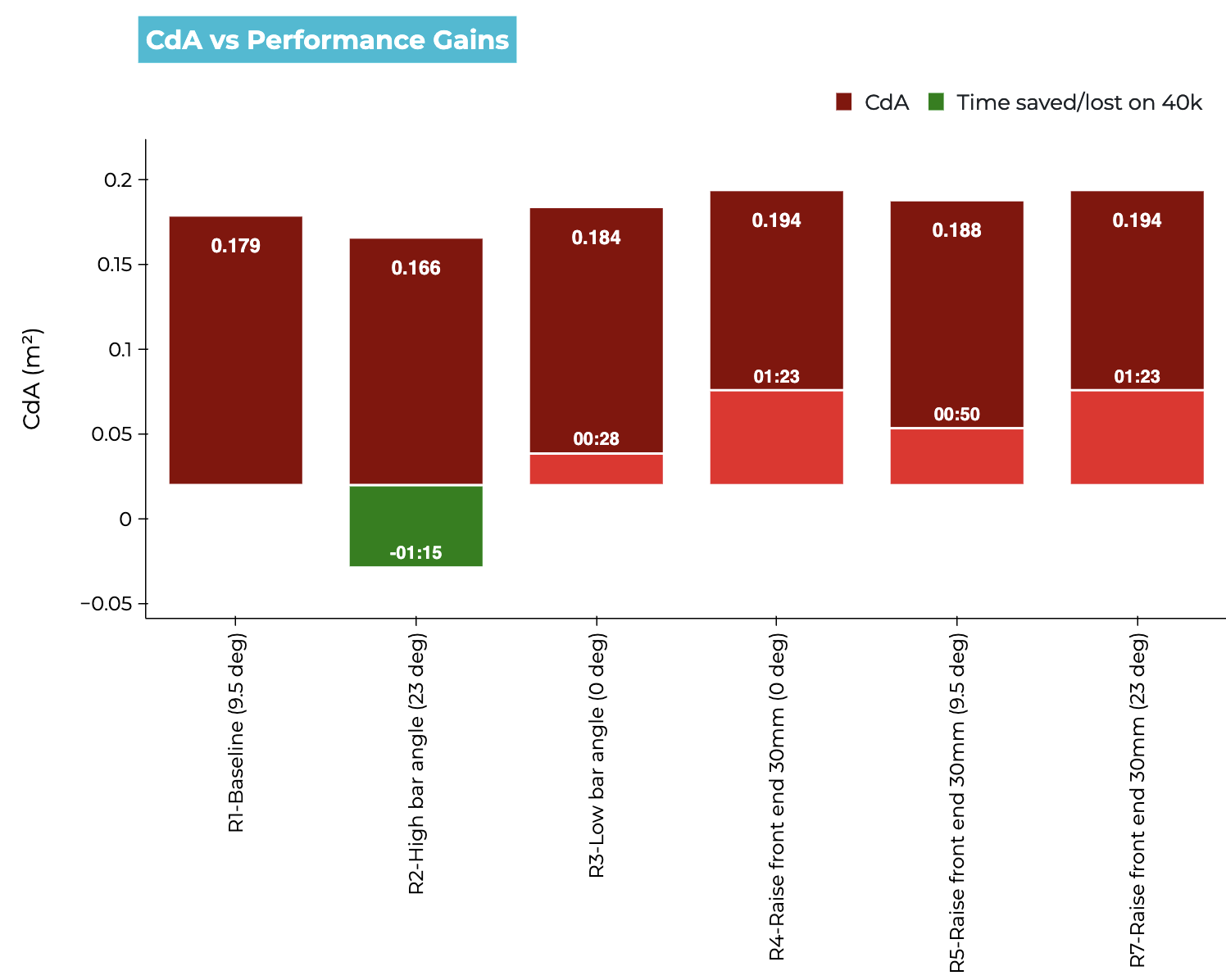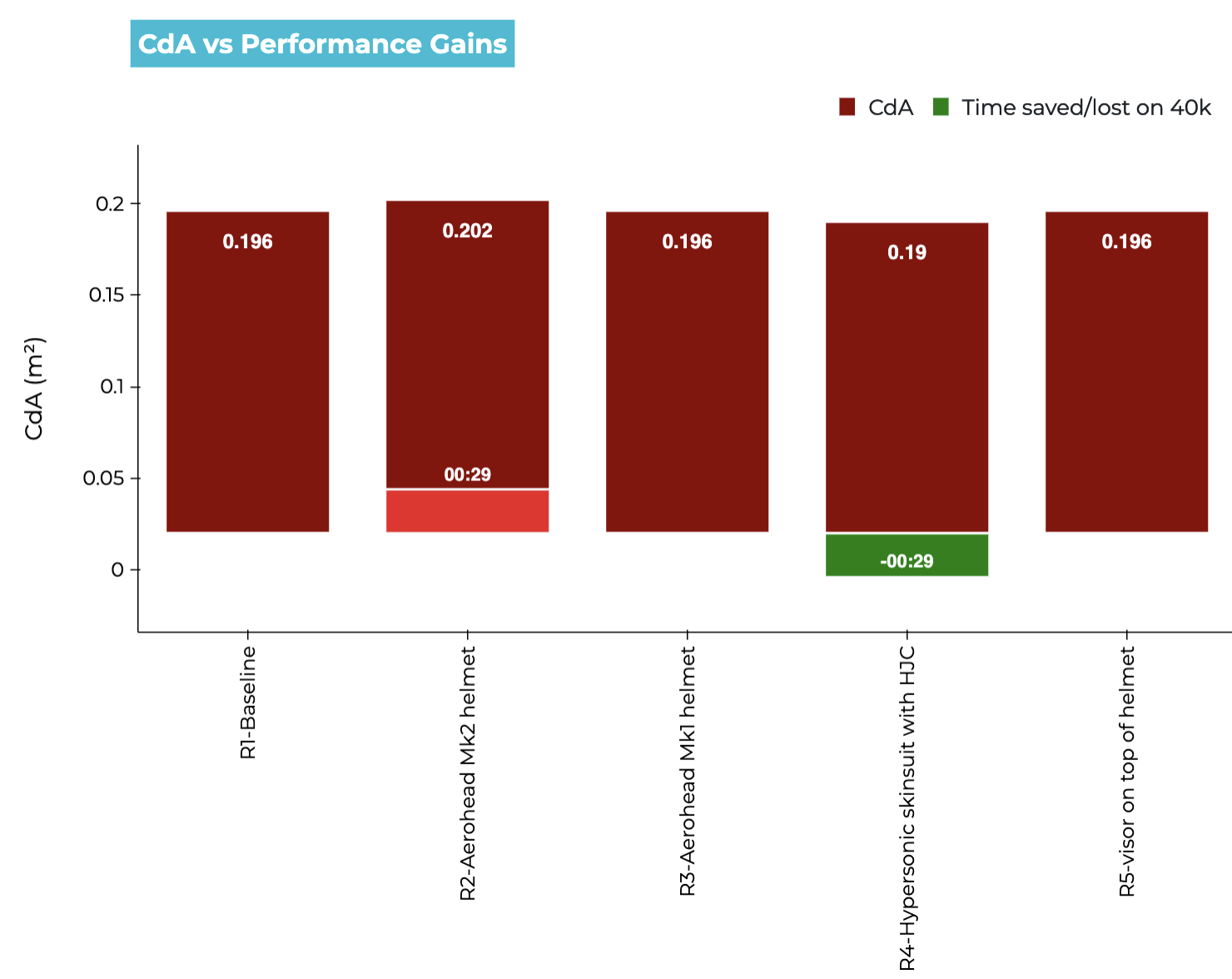
Tony Ball has been a committed member of the Legato Racing Team for the past five seasons, consistently racing at a high level. Now, he's taking his performance a step further with a focused approach to aerodynamic optimisation. Ahead of the new season, Tony has completed two targeted aero testing sessions, the first at Catesby
Tunnel and the second at Derby Velodrome, each designed to fine-tune a specific performance variable.
In his first aero session at Catesby Tunnel, Tony focused exclusively on position refinement. With his baseline setup starting at a CdA of 0.179, he tested a number of bar angle and front-end configurations to find the optimal blend of aerodynamics, comfort, and power retention.

The most significant gain came from adjusting his bar angle to 23 degrees, which brought his CdA down to 0.166, a drop that translated to a 1 minute 15 seconds saving over 40km (equivalent to 10 watts). Importantly, this faster position didn’t sacrifice saddle stability or power output, making it a sustainable choice for racing.
Other tested changes, such as lowering bar angle or raising the front end, actually increased CdA, with some setups costing up to 1 minute 23 seconds in time. These comparisons reinforced the value of staying low and narrow, when the rider can maintain that position effectively.
Having established a new, sustainable aero position, Tony moved to testing apparel at Derby Velodrome. This second session focused entirely on race-day kit: helmet, visor, and skinsuit combinations.

The results showed that newer isn’t always faster:
Interestingly, using a visor on top of the helmet (R5) provided no additional benefit over the baseline for Tony.
Tony’s testing strategy is a case study in structured optimisation. Rather than testing everything at once, he isolated one variable per session, first his position, then his kit. This allowed for:
By working through variables sequentially, Tony has created a complete aero package that’s been validated in two different locations.
After five consecutive seasons of racing, Tony continues to seek every competitive edge. By taking a structured, data-led approach and isolating key variables in two controlled aero sessions, he’s already achieved measurable gains, and he’s just getting started.
These are substantial improvements, enough to shift a rider from pack-filler to podium contender, especially in time trials or solo breakaways where aerodynamics matter most.
With his position and race-day kit now validated through testing, Tony is in a strong place for the 2025 season. But this isn’t the end of the road for optimisation - far from it.
Next steps could include:
By continuing to isolate and test each variable, Tony can unlock even more gains, building on his current momentum to shape a race setup that’s both scientifically proven and performance ready.
Tony’s journey proves that aero isn’t one and done, it’s a process of continuous refinement. And with over two minutes already gained, he’s well on his way to making a real impact in his comeback season.